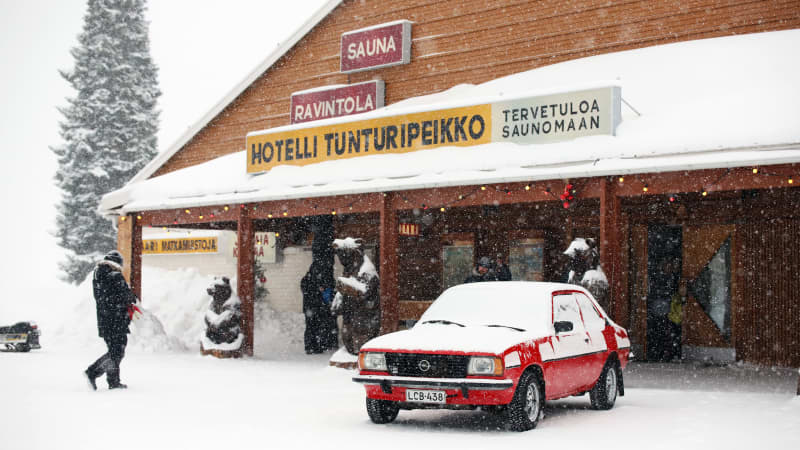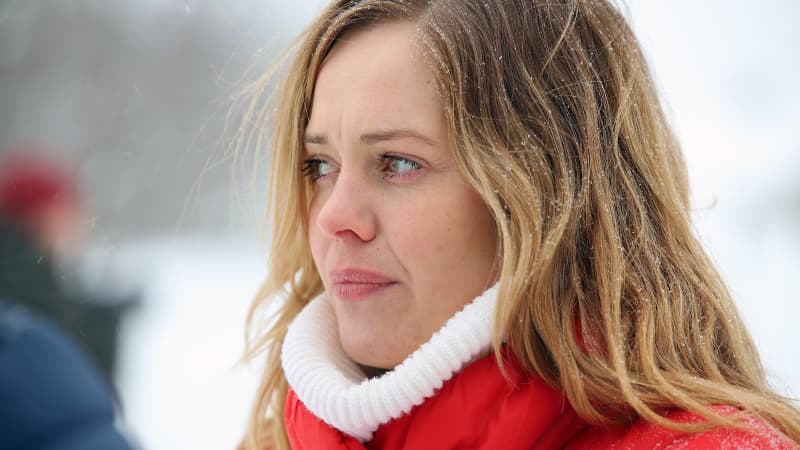The budget of the drama comedy is around 2.5 million euros. It premieres next year. The interior scenes of the film are shot in Estonia instead of Lapland, because the country offers better production support than Finland.
A bright yellow Trapper snowmobile belches acrid smoke in the freezing cold. On top of the sled sits a woman dressed in a pink overall with her fluffy crepe curls. A waxed old Saab 900 peeks out from around the corner.
We are on a time trip to the wonderful 1980s.
For the film, the Kemijärvi cultural center has been transformed into an imaginary restaurant-hotel Tunturipeiko, full of fluffy perms, ski overalls and eye shadows in all neon shades that fit the image of the time.
According to writer-director Tervo, the idea for the film came about as a result of a bar evening.
– A friend asked if I remember the missile and how they started making missile donuts in the villages.
The detail stuck in Tervo’s head.
– It was somehow a cool story and it describes us, there will be such a boundary violation and we will just bake donuts.

Pushing the limits of a single mother
In the movie itself, the missile is still just a background story.
In time, the incident resulted in an international farce, in which the major powers and even the Pentagon intervened.
– Due to its Finnishness, Finland was unable to admit that it was even a missile, says Tervo.
In the film, violation of state borders is combined with personal border drawing, fear of violence and self-defense.
According to the lead actor Airola, getting used to the role has also been about getting to know one’s own personal limits.
Before his role, Airola was of course also instructed in the East Lapland dialect.
He thanks Kemijärvi and the people of Kemijärvi for the warm welcome.
– In this film, the milieu plays a big part. It’s been cold here, but it didn’t come as a surprise, says Airola.

Filming in Kemijärvi instead of Inari
Even though the missile itself fell in Inari, Tervo’s film was filmed in Pelkosenniemi and Kemijärvi.
The reason is simple.
The Kemijärvi cultural center was the perfect place for that.
In addition to the milieu suitable for the time, a lot of effort has been put into the filming and staging to create the right image of the time. The outfit included, among other things, three boxes of fur caps.
– It requires quite precise work, when all the margarine boxes have to be authentic from the 80s, Viitala says.
According to Tervo, the working group also wanted to offer viewers something new with the help of Kemijärvi. In recent years, according to the director Tervo, Inari and Ivalo have become perhaps even too familiar to many TV viewers through, among other things, the popular Ivalo TV series.
According to the director, money also weighed in the balance cup. In Kemijärvi, the costs of filming remained reasonable.
Still, only exterior shots of the film have been filmed in Lapland. All interior filming will be done later in Estonia.
According to producer Viitala, the reason for filming there is the production subsidies offered by the country. In practice, when the film is shot in Estonia, 30 percent of the incurred expenses are reimbursed.

Past success created pressure
For director Miia Tervo, Ohjus is the second feature film of her career. Tervo’s debut directorial Aurora premiered in 2019 and the following year won no less than seven Jussi statues.
Tervo admits that Aurora’s success also brought pressure.
– It took quite a long time before I could start anything. However, this felt right. When I started, I felt like I’d never done anything, but it’s been nice.
The film’s budget is around 2.5 million euros. The amount includes the support of 840,000 euros received by the film from the Finnish Film Foundation. Director Tervo has also written the film. It premieres next year.
